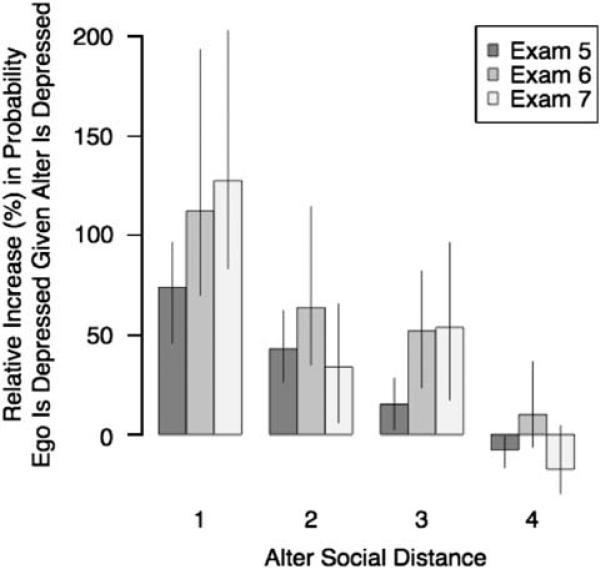Figure 2.
Social Distance and Depression in the Framingham Social Network. This figure shows for each exam the percentage increase in the likelihood a given ego is depressed if a friend or family member at a certain social distance is depressed (where depressed is defined as a score greater than 16 or greater on the CES-D). Values are derived by comparing the conditional probability of being depressed in the observed network with an identical network (with topology and incidence of depression preserved) in which the same number of depressed subjects are randomly distributed. Alter social distance refers to closest social distance between the alter and ego (alter = distance 1, alter's alter = distance 2, etc.). Error bars show 95% confidence intervals. CES-D, Center for Epidemiological Studies Depression Scale.

